Winged Dark Humour
The design and craft studio will be presenting their newest exhibition at Design Days Dubai, at the Contemporary Art Platform from 18-21 March 2013.
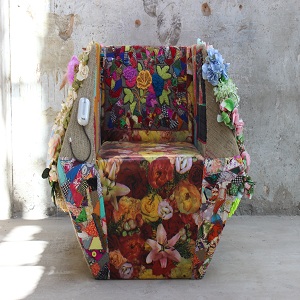
In collaboration with designer Wyssem Nochi, Bokja has created an exhibition titled The Seven Stages of the Heart. This collection is rooted in Sufi teaching and, through the creative application of fabrics to seven of Nochi’s iconic iron chairs, the installation illustrates the journey from the material to the spiritual.
Baroudi and Hibri, describe how they were drawn to Sufism and chose to interpret the teaching through their collection. “The lines of the hexagon in Wyssem Nochi’s chair form a natural pyramid,” they said. “His design was pure and minimal and offered the perfect foundation to build our collection. Each upholstered chair represents a stage in the journey of life – to shed oneself of all material possessions and earthly desires.”
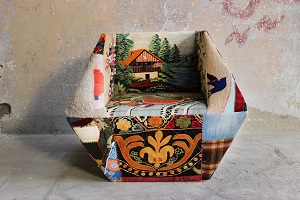

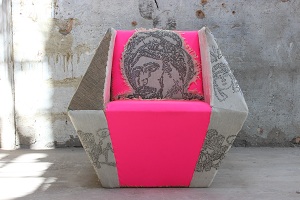
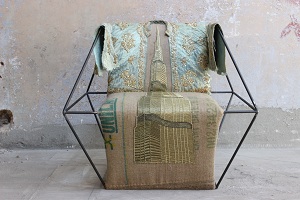
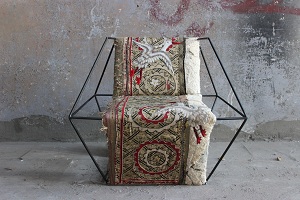
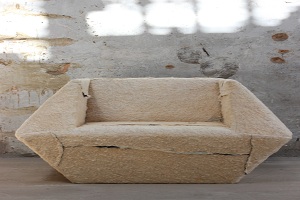
They add, “When thinking about the impact of recent events in our region of the world, we found ourselves looking inwards, trying to make sense of things.
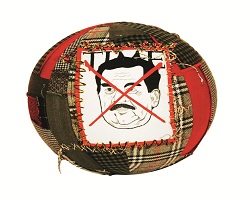
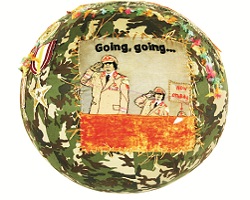
Intuitively we were drawn to the words and teachings of Sufism to help us understand, spiritually, what has been happening.”
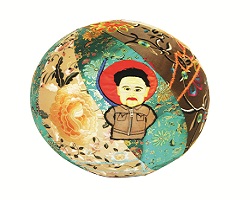
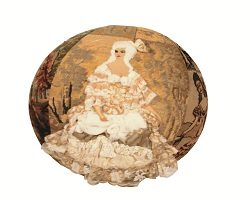
The Seven Stages of the Heart
The collection starts with a chair made entirely of “plastic noise,” fake flowers, cutlery and keyboards
The second stage is represented by layers of Suzani textiles and needlepoint images of earthy connections: a bowl of fruit and home
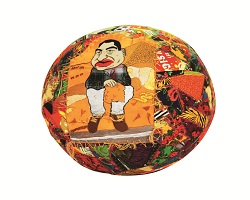

At stage three we see a shift. The chair is composed of layers of heavy white fabrics and Arabic letters begin to appear as in embroidered gold thread.
By now, the shift is clear. An embroidered Sufi text appears alongside a face
The core of the fifth chair features an embroidered Burj Khalifa on top of an Ottoman prince’s coat. The fine, gold thread of the embroidery shines with vanity but the remainder of the chair is exposed, revealing the iron structure of Nochi’s design.

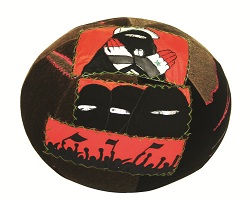
Stage six features more exposed iron with embroidered birds on a dilapidated
Suzani fabric.
At the seventh, and final stage, the chair is covered in a simple, natural white fiber representing a harmonious unity with God.
And Then There were None
Agatha Christie’s most popular novel, “And Then There Were None,” is a story about ten people who have previously been complicit in the deaths of others but have escaped notice or punishment. They are tricked into coming onto an island where each is murdered one by one, in a manner paralleling the popular nursery rhyme, “Ten Little Indians.”
Inspired by the domino effect of crumbling dictatorships in the Arab region, Bokja has created And Then There Were None, an installation of tactile spheres. Each piece represents a leader from time and their sphere of- or “no longer of” – influence. Injecting a twist of dark humor, Bokja presents the installation in parallel with the popular nursery rhyme, “Ten Little Indians.” From a hand embroidered image of Marie Antoinette (France) to birds trapped by barbed wire (Palestine) to a female crying tears of blood that stain her black abaya (Syria), Bokja warns of the timeless phenomena of dictatorship and playfully questions a day “when there will be none.”



